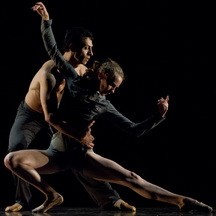
Mythic Swan Lake
As part of its program of outreach San Francisco Ballet presented a weekend-long symposium along with the opening of its current production of Swan Lake this past weekend. There were conversations with ballerinas on the interpretation of the role of Odette/Odile and presentations on the history of the ballet. Also, a talk on the relevance of this late Romantic ballet in a contemporary world.
Relevance is an intriguing question. And an important one for many of the larger arts companies, struggling with high costs of elaborate productions, and competing with popular art forms and the increasing presence of the internet, which provides easy, accessible and inexpensive entertainment and art. It is not only classical ballet that asks the question of relevance.
The answer can be found in the art itself, I believe, and one that last weekend’s opening addressed by its very presence. There have been many re-workings of Swan Lake recently, as there have been re-workings of other theatrical and dance classics. Few of them match and none surpass the original. The current production itself expands the original 19th-century ballet, but for the most part the story and much of choreography remain intact.
Swan Lake is beautiful and retains that beauty through its deeply mythical portrayal of an emotion that most humans long for: love. The myth of the swan maiden trapped in inhuman form is an ancient myth, going back as far perhaps as the Neolithic. And this striking central metaphor allows the viewer to set aside the trappings of class and gender politics that are found in the story and to be swept away by the motif of impossible desire and delusional love. It is, finally, a fairy tale.
An even greater aspect of its beauty, however, is the simplicity with which it delivers its story. And the simplicity of its choreographic concept.
The choreography thought of as the original was by Marius Petipa and Lev Ivanov. Tomasson who revised the ballet in 2009, has left much of the Act 2 choreography as it was designed. Certainly the patterned movement, the bird-like steps and arms, and the slow slow partnered adagios continue. They not only project a necessary quality of mystery but also allow for refined interpretation.
The music aids and abets. SF Ballet Symphony has a new concertmaster, Cordula Merks, who played the accompanying violin solos with sureness, sweetness and strength. O Tchaikovsky! O Cordula! The symphony, under the direction of Martin West, was its usual excellent self.
Saturday afternoon’s program was danced by Sofiane Sylve as Odette/Odile and Carlo di Lanno as Prince Siegfried. The dancers were well suited, each having a similar fluid and elegant style, long limbs and a careful placement that is both delicate and exact. Their Act 2 pas de deux was totally dreamy. Sylve has been dancing with the company since 2008 when she joined as a principal. Di Lanno is newly arrived, joining as a soloist in 2014. Although he had danced the role for La Scala Ballet, this was his first performance in the role for SF Ballet.
Do go. It’s a lovely ballet, one of the cornerstones of the art and a historic work that continues to endure.
– Jaime Robles
SF Ballet’s Swan Lake continues through February 28 at the War Memorial Opera House in San Francisco. For tickets and information, visit sfballet.org.
